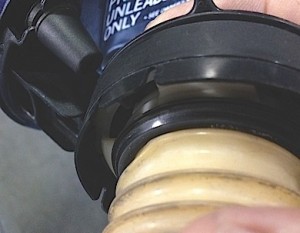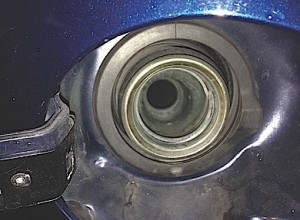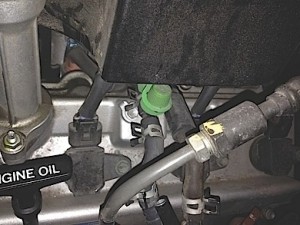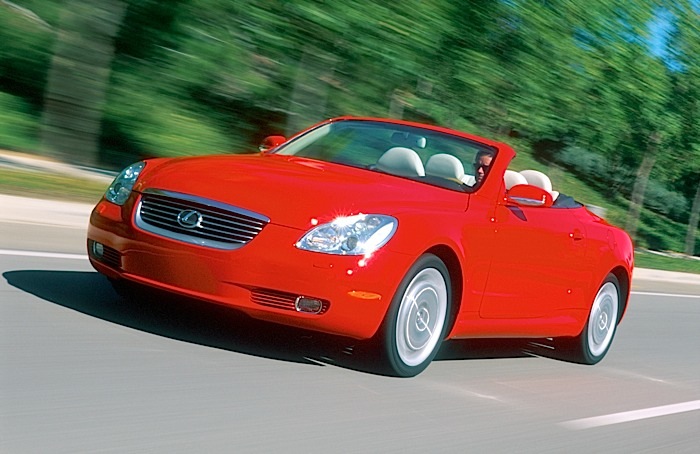First, we checked the fuel cap and seal (see Photo 1). I know it’s obvious, but the one time it’s not checked is the time the seal will be damaged or missing.

Next is the filler neck, and this one was OK (see Photo 2). We have seen many cars coming in with a slight bend in the neck that prevents a good seal. I suspect the reason for this is busy drivers getting gas and forgetting the nozzle is still in the tank.

Next is an underhood inspection. We wanted to check the service test port for the system, and we discovered a disconnected hose. See Photo 3.

I suppose the interview question at write-up needed to be clearer. We often ask if anyone looked at the car for this problem (the answer was no). I guess we will need to start asking, “Did the problem start after a recent service visit?” That may have indicated a possible workmanship issue at a prior shop.
We reconnected the hose and performed several drive cycles to reset the evaporative emissions monitor, and all was good.
The PCM looks for pressure in the charcoal canister and fuel tank to drop or increase beyond the specified limit during the system self-test. Be prepared to test other components on these cars, if needed.
There are many hoses, lines and components that are unique to Lexus. One in particular is only accessible by dropping the fuel tank. If you need to check the overfill check valve, be prepared to drop the tank. And when you do, also be prepared to drop the exhaust and driveline. So, be sure you’ve checked everything else first.
EPA Standards Looming
It should be noted that we are going to have new EPA standards starting soon (voluntary starting in 2017, mandatory by 2022), and they go like this: “To control evaporative emissions, more stringent standards will require covered vehicles to have essentially zero fuel vapor emissions in use, including more stringent evaporative emissions standards, new test procedures, and a new fuel/evaporative system leak standard.
“Tier 3 also includes refueling emissions standards for complete heavy-duty gasoline vehicles (HDGVs) over 10,000 lbs. GVWR. There are phase-in flexibilities, as well as credit and allowance programs. The standards, harmonized with California’s zero evaporative emissions standards, are designed to essentially eliminate fuel vapor-related evaporative emissions. The Tier 3 evaporative emissions standards will be phased in over a period of six MYs, 2017-2022.”
So, you can be sure it will be challenging to continue to test and repair these new systems. There are many new standards, and they’re not only for passenger cars.
The new standard specifications continue: “There is a new testing requirement referred to as the bleed emissions test procedure. Manufacturers will be required to measure diurnal emissions over the 2-day diurnal test procedure from just the fuel tank and the evaporative emissions canister, and comply with a 0.020 g/test standard for all LDVs, LDTs and MDPVs without averaging. The canister bleed emissions standard test will apply only to low-altitude testing conditions, but there is proportional control at higher altitudes.”
So, what does all of this mean? A proper diagnostics approach will not only simplify your evaporative emissions-related jobs, but will move you one step closer to meeting the upcoming EPA standards for this type of work. Consider standard operating procedures (SOPs) for your technicians to ensure uniform inspection and testing. If we all do it the same way, we can get consistent results, quicker turnaround and, most importantly, a happy customer with a properly repaired car.














